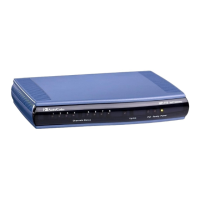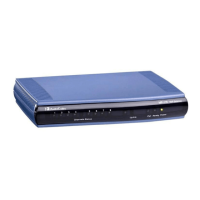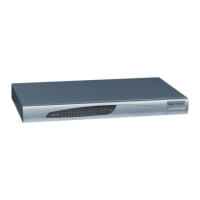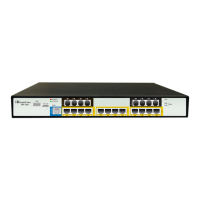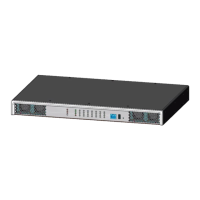Version 6.2 139 February 2011
SIP User's Manual 3. Web-Based Management
• Ping to the initial destination is unavailable, poor QoS (delay or packet loss,
calculated according to previous calls) is detected, or a DNS host name is
unresolved. For detailed information on Alternative Routing, see ''Configuring
Alternative Routing (Based on Connectivity and QoS'' on page 247).
• A defined Rel
ease Reason code (see ''Configuring Alternative Routing Reasons''
on page 144) is received.
Alternative routing is typically implemented when there is no response to an INVITE
message (after INVITE re-transmissions). The device then issues an internal 408 'No
Response' implicit Release Reason. If this reason is defined (see ''Configuring
Alternative Routing Reasons'' on page 144), the devi
ce immediately initiates a call to
the alternative destination using the next matching entry in this routing table. Note that
if a domain name in this table is resolved into two IP addresses, the timeout for
INVITE re-transmissions can be reduced by using the HotSwapRtx parameter.
Notes:
• If the alternative routing destination is the device itself, the call can be
configured to be routed to the PSTN. This feature is referred to as PSTN
Fallback. For example, if poor voice quality occurs over the IP network,
the call is rerouted through the legacy telephony system (PSTN).
• Outbound IP routing can be performed before or after number
manipulation. This is configured using the RouteModeTel2IP parameter,
as described below.
• You can also configure this table using the ini file table parameter Prefix
(see ''Number Manipulation and Routing Parameters'' on page 474).
¾ To configure Tel-to-IP routing rules:
1. Open the 'Tel to IP Routing' page (Configuration tab > VoIP menu > GW and IP to
IP submenu > Routing submenu > Tel to IP Routing).
Figure 3-86: Tel to IP Routing Page
The figure above displays the following Tel-to-IP routing rules:
• Rule 1: If the called phone number prefix is 10 and the caller's phone number
prefix is 100, the call is assigned settings configured for IP Profile ID 1 and then
sent to IP address 10.33.45.63.
• Rule 2: For all callers (*), if the called phone number prefix is 20, the call is sent
to the destination according to IP Group 1 (which in turn is associated with a
Proxy Set ID providing the IP address).
• Rule 3: If the called phone number prefix is 5, 7, 8, or 9 and the caller belongs to
Hunt Group ID 1, the call is sent to domain.com.
• Rule 4: For all callers (*), if the called phone number prefix is 00, the call is
rejected (discarded).
• Rule 5: For all callers (*), if the called phone number prefix is 6, the call is sent to
SRD 2 (i.e., Proxy Set associated with this SRD).

